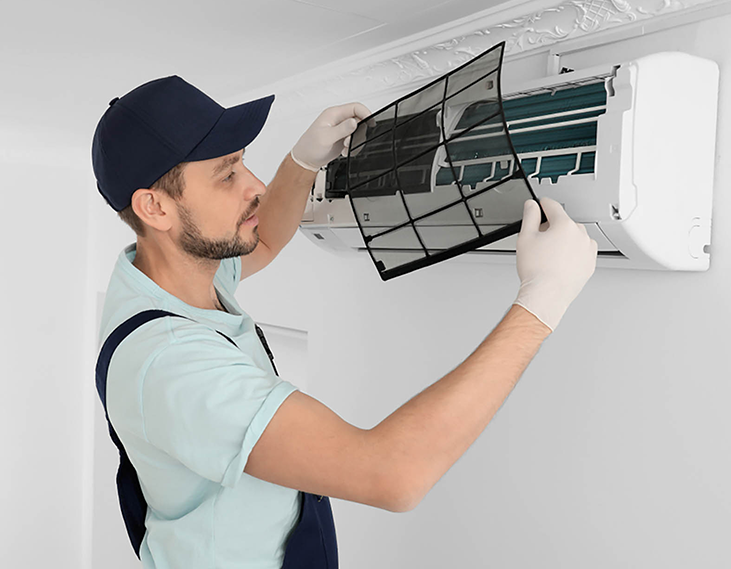Modern air conditioning systems are not just designed to keep you cool in summer—they are now also capable of heating your home in winter. This dual functionality is especially useful in the UK's unpredictable weather, where you may find yourself needing warmth one week and cooling the next. Managing temperature evenly across all floors can be tricky when it comes to a multi-story home. However, with the right techniques and a good understanding of your system, you can make your air conditioner work more efficiently to create a consistently comfortable environment.
In this blog, we’ll guide you on how to use your air conditioning system effectively across multiple floors, ensuring comfort, energy efficiency, and improved air quality throughout the year.
Understanding Modern Air Conditioning with Heating Technology
Modern air conditioning systems are often fitted with heat pump technology, which allows the same unit to cool and heat your home. Instead of generating heat, heat pumps move heat from outside air into your home, even in colder months, making them energy-efficient and sustainable.
If you're looking to upgrade your climate control system, air conditioning London solutions now commonly include advanced heat pump models ideal for urban homes and apartments.
Benefits of Heat Pumps in a Multi-Storey Home:
- Energy Efficiency: Heat pumps provide up to 4 units of heat for every unit of electricity used, making them more efficient than traditional heaters.
- Temperature Balance: These systems maintain a steady temperature throughout your home, helping to eliminate cold spots.
- Quiet Performance: Newer systems operate quietly, making them ideal for bedrooms and living spaces.
- Humidity Control: Air conditioning with dehumidifying features helps maintain comfortable humidity levels, especially in homes with limited ventilation.
- Lower Energy Costs: With less energy used, you’ll notice savings on your utility bills over time.

Top Tips for Maximising Comfort in Multi-Storey Homes
1. Zoning: Controlling Each Floor Individually
One of the most effective ways to manage temperature in a multi-level home is by creating zones. Zoning allows you to set different temperatures on each floor.
- Separate Units Per Floor: If your budget allows, installing separate units for each level gives you full control. You can keep living areas at around 20°C and bedrooms slightly cooler for better sleep.
- Use Smart Thermostats: Many modern air conditioners can connect to smart thermostats. These let you schedule temperatures based on time of day or occupancy, even when you’re away from home.
Example: Set the ground floor to 20°C during the day and the upper floor bedrooms to 17°C at night.
2. Improve Air Circulation
Good airflow is key to making sure warm or cool air is evenly spread throughout your home.
- Switch to Heat Mode: In winter, make sure your AC is set to heating mode.
- Adjust Fan Speeds: Using a medium fan speed helps distribute warm air gently without creating drafts.
- Set Air Direction: Direct airflow towards the centre of large rooms. This helps prevent hot or cold air from collecting near windows or ceilings.
3. Use Ceiling Fans in Winter
Most people think of ceiling fans as summer tools, but they are useful all year round.
- Reverse Ceiling Fan Direction: Many ceiling fans have a reverse mode that helps push warm air back down from the ceiling. This is particularly effective on upper floors where hot air tends to gather.
Using ceiling fans in winter helps move the heated air where you actually need it—around your body, not stuck at ceiling height.
4. Set the Right Temperatures for Different Rooms
You don’t need the same temperature throughout your entire house. Here's a general guide:
- Living Areas: 19-21°C during the day.
- Bedrooms: 16-18°C at night for better sleep.
- Kitchens: May require less heating due to heat from cooking appliances.
- Upper Floors: These are naturally warmer, so you might need less heat or more airflow.
Balancing your temperature settings across the home can lead to better comfort and reduced energy usage.
5. Improve Insulation and Seal Draughts
Even the best air conditioning system won’t work efficiently in a poorly insulated home. To help your system perform at its best:
- Seal Gaps: Check for air leaks around windows, doors, and skirting boards. Use draught excluders or sealants where needed.
- Upgrade Insulation: Insulating your loft, walls, and floors can prevent heat loss. This is especially important in older multi-storey houses.
- Use Heavy Curtains: Thick curtains can help trap warmth in the winter and keep out the heat in summer.
With good insulation, your air conditioning system won’t need to work as hard, helping you save on running costs.
6. Maintain Your System Regularly
Proper maintenance ensures your air conditioning system stays efficient and lasts longer.
- Clean or Replace Filters: Airflow is blocked and efficiency is decreased by dirty filters. Clean or change them as recommended by the manufacturer.
- Check for Blockages: Make sure vents and indoor units are not blocked by furniture or curtains.
- Schedule Annual Servicing: A professional technician can spot potential issues early, improve performance, and help extend the life of your system.
Keeping your system in good condition is vital, especially during the colder months when you rely on it for heating.
7. Consider Hybrid Heating Solutions
If you're looking for the ultimate comfort, especially during very cold UK winters, you might benefit from a hybrid heating system.
- Pair with Underfloor Heating: Underfloor heating works from the ground up, providing steady warmth that complements your AC’s airflow.
- Heat Pump Hybrids: Some systems can be paired with an extra heat source for added efficiency. This is ideal for older properties or homes with large open spaces.
Hybrid systems offer flexibility and can help solve tricky temperature issues in specific areas of your home.
8. Domestic Air Conditioning Installation Tips
If you're installing a new system, especially in a multi-storey home, make sure you:
- Plan Placement Wisely: Position units in areas that affect multiple rooms if possible.
- Choose the Right Size: Not always is bigger better. Oversized units waste energy because they cycle on and off too quickly.
- Work with Professionals: Experienced installers can assess your home and recommend the best system and layout for your needs.
Getting a professional domestic air conditioning installation ensures your system is efficient, compliant with regulations, and built to last.
Conclusion
Multi-storey homes present unique challenges when it comes to temperature control. But with the right air conditioning setup, careful planning, and a few smart strategies, you can enjoy consistent comfort across every level of your home, whether it’s the height of summer or the depth of winter.
If you’re looking for expert advice, professional servicing, or a reliable air conditioning London installation, we’re here to help. At Hamilton Air Conditioning Ltd, we provide tailored domestic solutions to help you stay comfortable all year round. Contact us today to learn more about how we can support your home’s heating and cooling needs.



